Waymo Engineer Issues Most Infuriating Car-related Tweet We've Ever Read
The internet is a black hole filled with an endless stream of stupid thoughts and bad ideas. While it’s usually best to ignore it, every so often something breaks through the obnoxious drone of social media that is so egregious, you couldn’t possibly turn a blind eye if you wanted to.
We are obligated to present to you a recent tweet from Vahid Kazemi, a software engineer for Google’s self-driving arm Waymo, and describe how it made us feel.
KPMG Study Has Even More Bad News for the Lowly Sedan
The hard-done-by sedan, once as commonplace as weeds, junk mail, and shattered dreams, doesn’t need any more of a push as it shuffles towards its waiting grave. The buying public is already killing the segment through neglect. Last month, the once-Godlike midsize sedan fell below 10-percent market share in the U.S.
It’s grim times for the traditional sedan, be it compact, midsize, or land yacht. However, anyone hoping for a plateau or even a sales revival is kidding themselves, according to a study by KPMG. The advent of technology will only push more buyers away from sedans and towards their one true love.
You'll Have to Pry the Steering Wheel From Porsche's Cold, Dead Hands
Like BMW, which aims to keep gas-powered M cars in production for as long as humanly possible, Porsche is also making a commitment to motoring purity in the face of new technologies and government overreach. That circular device positioned in front of the driver? Porsche wants to keep it there.
The specter of Big Government and Big Safety conspiring to kill non-autonomous motoring is a real fear, one that’s been talked about more than a little here at TTAC. Call it the Red Barchetta scenario.
Porsche seems aware of it, too, though it tiptoes around the entity at the center of the issue. Nevertheless, the automaker claims a future Porsche “will be one of the last automobiles with a steering wheel.”
FCC Prepares Repeal On Net Neutrality: Autonomous Car Victory or Orwellian Nightmare?
You’ve no doubt heard about net neutrality over the last few years. But, in case you haven’t, net neutrality is the principle that forces Internet service providers to treat all data on the Internet equally. It forbids them from discriminating on subject matter or charging different fees based upon the user, site content, website, platform, application, or method of delivery. Essentially, it makes the internet into a tap where you pay one flat fee for access to all content.
That could soon change. On Tuesday, the chairman of the Federal Communications Commission announced plans to repeal the landmark neutrality order from 2015. FCC head Ajit Pai, a Republican appointed by President Donald Trump in January, said last year that he believed net neutrality’s “days were numbered.”
Pai has been criticized for being overly supportive of telecom companies. But a few automakers support his cause, as some of the FCC’s regulations have been at odds with autonomous car development.
The Future Looks Swedish? Volvo Inks a Deal to Supply Uber's Driverless Dreams
Building on a strategic partnership announced in August last year, Volvo has signed a framework agreement with Uber to sell “tens of thousands” of autonomous driving compatible base vehicles between 2019 and 2021.
While reading the report, it was important for this author to keep in mind the challenge in affixing an actual definition to the words autonomous driving. There have been shouty voices in various parts of the internet disputing the terms autonomous, Autopilot, and self-driving. There is merit to these arguments.
Nevertheless, Volvo is working with Uber to create technology that will allow vehicles to move about without a driver providing input 100 percent of the time.
Jaguar Land Rover Enters the Autonomous Race, Test Vehicles on Public Roads
Jaguar Land Rover has taken its first steps into the scariest part of autonomous development — real world testing.
As most automakers are already deep into R&D work on self-driving cars, luxury manufacturers like JLR cannot afford to be late to the party. In today’s world, premium automobiles are less about ride quality or cabin space and more about having the latest and greatest tech. A big, comfortable car isn’t hard to come by — they used to build them all the time. They also aren’t particularly expensive, especially if you shop on the used market.
However, a 2005 Lincoln Town Car in the driveway doesn’t scream “prestige” to the neighbors. But an autonomous Range Rover that parks itself in the garage while you get the mail is something else entirely. If you had a vehicle like that, the guy across the street would have difficulty even holding your now-powerful gaze — shamed by his own car’s clear inferiority. Imagine what kind of price you might pay to have that kind of mastery over another person. Now you can see why this technology is so important to JLR.
Carlos Ghosn: Car Ownership Will Not Be Replaced With Mobility
Everyone in the automotive industry is talking about a grand shift toward mobility, resulting in a future where nobody owns cars and we all putt around in autonomous pods. Well, almost everyone. Carlos Ghosn, who currently chairs the alliance between Nissan, Renault, and Mitsubishi, thinks that’s a crock.
While there’s plenty of executives keeping quiet on the evolution of ownership, few have come forward suggest business as usual will be the new status quo. Meanwhile, swaths of industry experts are pushing the notion that rental services, ride-sharing, and firms like Uber or Lyft will eventually replace the need for dealerships and garages.
Not Carlos.
No Fixed Abode: Keep On Hittin' That Shuttle
Did you hear the one about the autonomous shuttle in Las Vegas? It ran for two hours before it was in a crash.
Did you hear the clarifying detail? The crash was not the shuttle’s fault and the other driver was cited.
Did you get the underlying message of all this? The hybrid model of autonomous vehicles sharing the road with human drivers is doomed to failure.
The only question is this: How much damage will have to be caused, and how many lives will be lost, before we accept that?
Video: Check Out Waymo's Self-Driving Cars in Action
After spending most of last week showing off its tech to the media, Waymo is launching its driverless pilot program in Arizona. While the rides won’t technically begin for a few months, you can already get a taste of the action via video footage of company’s trio of testbed Chrysler Pacificas.
It’s impressive to see the Pacificas not run down any pedestrians, especially since none of them seemed to notice being approached by a van without a driver.
During a keynote speech at a tech conference in Lisbon, Portugal, Waymo CEO John Krafcik showed video of the firm’s test vehicles operating on public roads without any human supervision. “This wasn’t just a one-time ride or a demo,” Krafcik told the crowd. “What you’re seeing now marks the start of a new phase for Waymo and the history of this technology.”
Old Man Lutz Outlines the 'End of the Automobile Era'
Although semi-retired from the automotive industry, Bob Lutz still has his fingers in a lot of pies and continues to provide insight into the vehicular world as he sees it through veteran eyes. I never miss an opportunity to read what he’s got to say about the industry because he provides unusually frank insight paired with borderline ludicrous sensationalism that’s too juicy to ignore.
That doesn’t mean he’s wrong, especially since one of his more recent claims about the financial inviability of Tesla Motors has started to seem particularly astute. But a lot of his premonitions haven’t had the time necessary to come to pass, leaving us to speculate if he’s an automotive sage or just an old crank. He routinely weighs in on the industry to offer entertaining doomsday scenarios — and his newest one is the bleakest yet.
Will Robot Cars Make Jaywalking Legal? Maybe, But There's a Cost
A report released this week suggests that if self-driving cars become our new normal, it may mean you can jaywalk with impunity again. As if New Yorkers, Chicagoans, and residents of other major cities don’t do so already.
The National Association of City Transportation Officials, a non-profit with represents cities on issues related to transportation, put out a report this week suggesting cities should allow pedestrians to cross streets anywhere, instead of just crosswalks. The report also says self-driving cars would usually be limited to 20 mph and would be able to use pedestrian-detection technology to slow down or stop in order to avoid hitting folks crossing the road.
Is Human Involvement a Liability When It Comes to Autonomous Driving?
Commuting is awful. Unless you’re fortunate enough to have spartanly populated backroads between you and the office, that drive to work can be excruciatingly dull — with the only excitement coming from near misses and whatever terrible jokes drive-time radio offers up during that hour. When you get right down to it, most daily commutes are little more than unpleasant ways to add miles onto the odometer.
Of course, with the promise of autonomous driving, that experience is supposed to transform into a worry-free jaunt. But there’s a problem. Most self-driving systems of the near future will require operators to pay roughly the same amount of attention they do now. After all, if your car miscalculates a situation, you’ll want to be ready to take over the instant something seems awry. If that’s the direction we’re heading with this technology, I’m starting to think it might just be easier to automate all of our jobs instead of the the method we use to get to them.
However, at least one self-driving firm has abandoned the development of features that would require human intervention — leaving the car to make up its own mind in an emergency situation.
Self-driving Cars Head to Michigan For Winter Testing
There’s something we don’t often hear about when companies discuss the glory of the autonomous car: the lack of functionality of specific hardware during inclement weather.
Camera systems can be rendered ineffective when covered with ice and snow cover of an inch or more can easily obscure lane markings, leaving self-driving cars at a serious disadvantage. LiDAR, which operates using light beams, can be severely thrown in fog or whiteout conditions. Even if a blizzard doesn’t knock out the vehicle’s sensor array, its computer will still have to know how to mitigate slippery road surfaces.
Whether you’re human or machine, winter driving is extremely taxing. But technology companies hoping to build a self-driving car eventually have to move into snowy regions to advance testing. Some of the bigger automakers already have. Ford, for example, has begun extensive regional mapping — hoping to give cars handicapped by poor visibility a leg up.
Waymo has also decided it’s time to throw on a parka and winter tires. It’s heading to Michigan to start cold-weather testing next week.
Waymo Drops Comprehensive Self-Driving Safety Assessment, Tries to Educate Public
Autonomous cars have the unique capability to captivate the public’s imagination while simultaneously making them feel uneasy after considering things on a more practical level. A handful of self-driving related accidents, inconsistent development timetables, and a hands-off regulation strategy haven’t helped. But there is a sense that if the populace had a better handle on what went into making the technology work safely, some of their fears would be put to rest.
This week, Waymo — the relatively quiet autonomous vehicle arm of Alphabet Inc. — made an attempt to do just that. While also making a case for itself and the need for self-driving cars, the company released a 42-page outline of how its autonomous systems function. Written without a lot of technical jargon, the reading remains comprehensive and is one of the best attempts we’ve seen from a company to educate the public — rather than dazzle them with lofty promises.
Volkswagen Dumps $1.7 Billion Into Development of Electric Buses, Commercial Trucks
Having already dropped itself into an ocean of electric car R&D, Volkswagen is now making plans to develop battery-powered commercial vehicles aimed at servicing urban areas where public officials are having night terrors about air quality.
Jürgen Stackmann, VW’s board member responsible for sales and marketing, promised the company would be at “full steam” on EV production and development by 2020. That includes a battery-only option for “all styles and body types” by 2030, according to Stackmann. But the brand wants to have something similar on the table for trucks and buses before then.
Volkswagen Truck & Bus is investing 1.4 billion euros ($1.7 billion) into new electric drivetrains for use in both medium and heavy-duty distribution transport and city buses. While that development will go toward European vehicles initially, VW and strategic partner Navistar will use the “e-drivetrain” platform on U.S.-based electric trucks from 2019 onwards.
Congress Will Be Bombarded With Autonomous Car Propaganda This Week
This week, the Coalition for Future Mobility — a recently formed automotive trade group representing major automakers and self-driving advocates — will roll out a bevy of targeted television spots, print ads, and social media posts specifically designed to encourage Congress to adopt legislation assisting the budding industry’s growth.
Earlier in the month, the House of Representatives passed a bill that would expedite the deployment of self-driving cars and prohibit states from blocking autonomous vehicle testing. This was immediately followed by Transportation Secretary Elaine Chao publicly outlining the NHTSA’s updated automotive safety guidance — which was less about ensuring the safe development of self-driving cars and more about destroying regulatory red tape.
The Senate is the final piece of the puzzle. Automakers want to make sure it’s seeing things their way before casting their vote on whether or not the industry gets the governmental green light.
You Not Having a Car With 'Superpowers' is Somehow Donald Trump's Fault
Supposedly, everyone eagerly anticipates the day they can own a shiny-new self-driving car, but automakers, regulatory agencies, consumer advocates, Silicon Valley, and the White House are debating how exactly that’s supposed to happen. They haven’t reached a consensus yet — and that’s probably not likely to change anytime soon.
Most autonomous cars rely on array of cameras, LIDAR, GPS, inertial measurement devices, and complex control systems used to interpret sensory information before reacting accordingly. Vehicle-to-vehicle communication systems (V2V) are regarded by many as essential components to establishing fully automated travel. The theory is that, by allowing cars to communicate directly on a broadband frequency, they can better predict each other’s movements.
However, a recent Bloomberg article accuses the technology of “going nowhere fast,” citing the Trump administration as the chief culprit, and alluding to the direct stifling of technology that would give cars “superpowers” in the next few years.
I probably won’t have the opportunity to say this often — and it feels kind of strange to say it now — but these accusations aren’t entirely fair to the president or his administration.
Autonomous Cars Make People Uncomfortable - What Can Manufacturers Do About It?
There’s nothing that will convince me that the first wave of autonomous taxis will be anything other than mobile biohazards, providing a slightly less convenient solution to paying a man to let you ride in the back of his Toyota Camry for a few miles. However, I will give them a shot once they arrive — mainly out of curiosity, which puts me in the minority.
Gartner Inc., an American research and advisory firm that works specifically within the realm of advanced technologies, recently completed a survey where over half of its respondents said there was no way in hell they’d get into the back of a fully autonomous vehicle. Its findings echo an American-based MIT study from earlier this year, as well as a global survey from Deloitte. The consensus: most of the population doesn’t feel particularly good about self-driving cars.
Not to be a defender of unproven technology, but there’s also nothing stopping a human cab driver from driving you to the wrong destination before trying to murder you with an axe. It doesn’t happen often, but it is a possibility. Likewise, autonomous cabs pose some element of risk no matter how good a job manufacturers do with those early models. But you’re not likely to be the occupant of the one that does goes haywire. It’s a problem of perception more than anything else.
Talking With Lights: Ford Disguises Driver As a Seat to Scrutinize a Confused Public
Ford Motor Company has been funding research at Virginia Tech that takes an interesting approach to autonomous vehicle development. In early August, a reporter for an NBC affiliate in Washington D.C. filmed a video of a Ford Transit being driven by a man dressed up as the front seat of a car. Initially, it seemed like a strange campus prank. But it was later discovered that Virginia Tech’s Transportation Institute was doing research on how people would respond to a self-driving vehicle.
Apparently, they’ll approach it with a camera — even if it’s in the middle of the street or flying down the highway.
Ford later released a series of hysterical images featuring the man climbing into the false seat costume, announcing that it was researching reactions to the light bar stretched across van’s windshield. The lights are intended to replace cues like hand waves or head nods between drivers and pedestrians.
Presently, drivers have the ability to motion their hand at pedestrians, indication that it’s safe for them to walk. This author takes things a step further by mouthing easy to understand phrases like, “Fear not, I have decided to spare your life and will not crush you beneath my mighty wheels if you pass” as I ambulate my fingers in a walking motion and nod my head in a slow, deliberate fashion. It usually gets the point across, but it’s nice to know Ford can save me the trouble with a bunch of blinking lights.
NHTSA's Updated Autonomous Safety Guidance Doesn't Actually Offer Any
On Tuesday, Transportation Secretary Elaine Chao outlined the Trump administration’s “Vision for Safety 2.0” at the University of Michigan’s Transportation Research Institute in Ann Arbor. The document is a collection of non-binding requests to manufacturers and a promise that they can go hog-wild with their autonomous vehicle testing, at least as far as the feds are concerned.
In a deluge of policy updates, the National Highway Traffic Safety Administration tweaked its vision for safety, claiming it was responding to the recent increase in the number of road accidents.
While Obama-era guidelines weren’t particularly robust, the Trump administration has essentially built a technical-sounding framework aimed at destroying regulatory red tape. Ironically, the government seems to have gone out of its way to ensure it stays out of the way. In some respects, it has to. The speed of development is beginning to happen at a rate where any outside bureaucracy would have difficulty keeping pace. Chao said the guidance would remain flexible, ready to adapt to the changes as they come. But it is also without teeth, promoting development and the future promise for safety at the expense of any meaningful oversight.
Did the Department of Transportation and NHTSA sell themselves out to industry or do they actually think giving automakers carte blanche on autonomous testing was the best thing for public safety?
Operational Limits Played 'Major Role' in Fatal Tesla Autopilot Crash, Says NTSB
According to a preliminary report from the National Transportation Safety Board, the “operational limitations” of Tesla’s Autopilot system played “major role” in a highly publicized crash in May of 2016 that resulted in the death of a Model S driver.
On Tuesday, the NTSB cited the incident as a perfect storm of driver error and Tesla’s Autopilot design, which led to an over-reliance on the system’s semi-autonomous features. After a meeting lasting nearly three hours, the agency’s board determined probable cause of the accident was a combination of a semi truck driver failing to yield the right-of-way, the Tesla driver’s unwillingness to retake the wheel, and Tesla’s own system — which may have set the framework for the accident.
House Unanimously Approves Proposal to Deploy Self-driving Cars, and Not Everyone's Happy
On Wednesday, the U.S. House unanimously approved a sweeping proposal to expedite the deployment of self-driving cars and prohibit states from blocking autonomous vehicle testing.
“With this legislation, innovation can flourish without the heavy hand of government,” Ohio Republican Bob Latta said on the House floor leading up to Wednesday’s vote. Latta is chairman of the House Energy and Commerce subcommittee that developed the legislation with support from tech companies and the automotive industry.
One thing missing from the House measure is large trucks, which the Senate hopes to address in its own bipartisan legislation. Congress announced a September 13th hearing to examine the role of autonomous commercial vehicles and how they may fit into the Senate’s pending self-driving legislation. Meanwhile, the House’s bill moves up the board to be put to a vote within the Senate at a later date.
You Read It Here First: The Biggest Challenge to Autonomous Vehicles Is All Too Human
A bit more than six years ago, I wrote “The Blockers” for this site as a work of fiction, suggesting that there may be a bit of a popular revolt against self-driving vehicles and that it might be led by those who felt personally dehumanized as a consequence of “progress.”
Now, the nice people at MIT Technology Review have caught up to your humble author’s dystopian point of view.
Ford's Autonomous Driving Effort Doesn't End at Pizza Delivery
Earlier this week, we griped about Ford Motor Company’s market research into the validity of self-driving pizza delivery vehicles. Thankfully, that’s not the sole avenue the automaker is exploring. Since abandoning Uber Technologies’ self-driving program in April, Ford’s new vice president of autonomous vehicles and electrification, Sherif Marakby, has spent the summer seeking partners that might want to put autonomous vehicles on the road in the near future.
Meanwhile, Ford chief executive Jim Hackett, who took over in May, is conducting a review of the automaker’s overall strategy, including the heavy investments made into electric and self-driving vehicles that took place under former CEO Mark Fields. While it’s unknown how viable he’ll deem every aspect of company’s Fieldsian mobility plan, early assessments hint he’ll leave Marakby plenty to work with.
Dumb Ideas: Domino's and Ford to Test 'Autonomous Pizza Delivery'
Ford and Domino’s Pizza are joining forces to test self-driving pizza delivery vehicles in Michigan. The venture is an attempt to better understand how customers respond to and interact with autonomous vehicles and assess the future relevancy of the technology. But the cars in question aren’t actually self-driving, they’re simulated autonomous vehicles doing market research.
Essentially, Domino’s customers in Ann Arbor, Michigan will have the option to accept pizza deliveries from a standard Ford Fusion Hybrid with loads of visual accoutrements to denote a cutting-edge test vehicle and a human operator obscured by a partition and some tinted glass. The customer is the test platform, not the car.
While it’s understandable that removing the driver from the equation might someday save pizza chains tons of dough, there are a few things neither Ford, nor Domino’s, seem to have considered.
Cadillac Changes Its Super Cruise Strategy, Commences Media Campaign Prior to Launch
Setbacks notwithstanding, we’ve been eagerly anticipating Cadillac’s entry into the world of semi-autonomous driving with its Super Cruise system, developed to help reinforce the automaker’s position as top-tier luxury brand. After all, vehicular opulence is now deeply embedded with technological achievement and few things shout “I’ve arrived” like a car that can chauffeur you around.
However, Cadillac is changing its implementation strategy, making Super Cruise standard on the highest trimmed CT6 — instead of leaving it as a pricy optional extra. It’s also launching an advertising campaign to whet the public’s appetite, with the first of its “Let Go” TV spots appearing on MTV’s Video Music Awards over the weekend.
New U.S. Bill Would Update Automotive Rules, Allowing for Non-human Drivers
When the automobile came into its own, there wasn’t really a place for it. Roads had been reserved for foot traffic and horses for hundreds of years before the invention of the internal combustion engines. Pedestrian injuries were high until they were partitioned onto the sidewalk. Likewise, it was some time before the millions of horses were be rounded up, placed into a giant pit, and shot to death by 20th-century motorists.
However, the industry didn’t really take safety into account until Ralph Nader wrote Unsafe at Any Speed and holding automakers accountable for safety suddenly became fashionable — helping America pass the National Traffic and Motor Vehicle Safety Act in 1966 and subsequent legislation. Granted, vehicular fatality rates still fell dramatically between 1925 and 1965, but the regulatory influence didn’t skyrocket until after Nader’s analysis of the industry.
With autonomous vehicles positioned to change the way we “drive,” the long-established and ever-growing rulebook may need revisions. In July, a collective of automakers, suppliers, engineers, and consumer groups, calling themselves the Coalition for Future Mobility issued a statement urging Congress to consider legislation it deemed “critical to the United States continuing to be a place of innovation and development for the life-saving technologies.” Fast forward to August, and there is already a bill on the table.
Elon Musk Presses for Total Ban on Autonomous Weapons, Self-driving (Potential) Killer Cars Still Okay
The United Nations recently voted to begin formal discussions on autonomous weapon systems, with 116 of the world’s leading robotics and artificial intelligence experts responding by calling on governments to simply ban them.
The coalition, fronted by Tesla’s Elon Musk and Alphabet’s Mustafa Suleyman, claims this is a dark road the world doesn’t want to go down. Aimed at the International Joint Conference on Artificial Intelligence, a letter from the group warned the U.N. not to usher in the “third revolution in warfare” (following gunpowder and nuclear arms).
While I’m not about to suggest there aren’t serious risks involved with weaponizing thinking machines, it does seem lightly hypocritical for Musk to condemn them over a lack of trust while continuing to champion self-driving cars. Apparently, technology experts feel a Terminator scenario is thoroughly unacceptable but a potential Maximum Overdrive situation is just fine.
Money-hungry States Lining Up to Tax Self-driving Cars (Just Like EVs)
There’s few things people living in the U.S. can agree on, but one of those things is the state of American road infrastructure. For the most part, it sucks. Eisenhower’s long gone, but his network of interstate highways, plus the spiderweb of two-lane roadways cross-crossing every corner of America haven’t grown better with age.
Meanwhile, the U.S. federal gas tax remains unchanged since its last hike in 1993. Still locked at 18.4 cents per gallon, the infrastructure funding shortfall created by the static federal tax is spurring states to pass their own gas tax increases. Michigan, California, and — controversially — New Jersey are among the most recent examples.
Still, boosting prices at the pumps only works if drivers still visit those pumps. What of the coming self-driving car wave, the vanguard of which are high-tech electric vehicles piloted by mere humans? Enter the taxman and his slim book of ideas.
Ford CEO Sees a Future for Hands-on Driving, but a New Patent Shows the Company Hedging Its Bets
If you believe certain segments of the media, we’ll soon be able to avoid the drudgery of turning a steering wheel, pressing and releasing pedals, and — gasp! — shifting gears.
The inevitable onset of self-driving vehicles, tech aficionados and urbanists tell us, will bring traffic fatalities down to zero, somehow remove all congestion from the road, and turn our lives into a never-ending sojourn of blissful tranquility. Never again will you take that aimless and unprogrammed late-night drive, just for the hell of it. Never again will you bother with buying and owning a car. Automakers will simply turn their driverless cars loose, emptying driveways while filling streets with hands-off ride-sharing pods.
Not so fast, says Ford’s newly minted CEO.
Not-so-sudden Impact: Waymo Patents a Softer-crashing Car to Safeguard Pedestrians
Autonomous vehicles are being billed as a safer alternative to human-controlled transportation and, assuming the hardware functions as intended, that’s likely to be the case. But eventually a self-driving car is going to smack into a pedestrian and no company wants to hold the honor of being first.
Google’s autonomous vehicle arm, Waymo, is working on a solution to mitigate the liabilities associated with such an incident by patenting a softer car.
Autonomous Features Are Making Everyone a Worse Driver
Autonomous vehicles are about as polarizing a subject as you could possibly bring up around a group of car enthusiasts. Plenty of gearheads get hot under the collar at the mere concept of a self-driving car. Meanwhile, automotive tech fetishists cannot wait to plant their — I’m assuming — khaki Chinos into the seat of an autonomous vehicle and enjoy a coffee without the hindrance of having to actually drive the thing to their destination.
I’ve previously discussed how autonomous cabs will become unparalleled filth-boxes, destined for salacious behavior. Because without driver oversight, why not sneeze into your hand and wipe it on the seat back? Now, surveys are beginning to indicate privately owned computer-controlled cars will be subject to similar activities — with some drivers suggesting they’ll have no qualms about having sex, drinking booze, or binge eating behind the wheel.
That’s the future we’re being promised, but a lot of autonomous features have already made it into modern production cars. Word is, they’re starting to make us terrible drivers. It’s enough to worry automakers to a point where they’re considering implementing an array of systems to more actively encourage driver involvement on a platform that’s designed to do the opposite.
Get ready to drive your self-driving car.
Saying What's Popular: Suppliers Claim Automakers Are Overselling the Future of 'Mobility'
Suppliers have begun putting automotive companies on blast for overly ambitious mobility claims. While self-driving cars are definitely en route, manufacturers have ramped up their arrival time and omitted the necessary pit stops to win favor with investors or the general public. Meanwhile, parts suppliers have been frank on the matter — explaining they know when autonomous cars are really coming because they’ll be the ones providing the tidbits that make them work.
Don Walker, CEO of Magna International, one of the world’s largest OEM parts suppliers, suggests automakers may even be misleading their customers. “A full autonomous vehicle is a long way off for lots of reasons, because of legislation, class-action lawsuits, all the complexities and the costs associated with it,” the executive said.
Speaking Wednesday at the 2017 Center for Automotive Research Management Briefing Seminars, Walker also took umbrage with the popular claim that electric vehicles could comprise around 25 percent of the new market by 2025. Instead, he claims EVs will only account for 3 to 6 percent of the global market within that timeframe — a figure predominantly dependent on how swiftly the highly regulated Chinese market grows.
LIDAR Will Make First-Generation Autonomous Vehicles Insanely Expensive or Pathetically Slow
Thanks to rhetoric beaten into us by the automotive industry, we know autonomous vehicles are “right around the corner.” Some manufacturers predict self-driving vehicles will be on the commercial market by an ambitiously early target date of 2021. However, those trick new rides are going to come at a premium that’ll keep them out of the hands of most normal people for a while.
LIDAR, the imaging system that allows an autonomous vehicle’s software to make sense of the road, is prohibitively expensive. High-end systems can approach the six-figure threshold while lower quality units rarely fall below 10 grand. Burgeoning technology is never affordable and automakers have traditionally found a way to produce advancements in cost-
effective ways. But the timeline for autonomous cars is too short, meaning any manufacturer wanting to sell one is going to have to have to accept the costs or defer production.
FCC Makes Room on the Airwaves for Autonomous Vehicles
Despite the Federal Communications Commission making a mess of net neutrality right now, it remains capable of serving corporate interests and the general public simultaneously. On Thursday, the FCC quintupled the allocation of the radio spectrum used for motor vehicle and aircraft radar systems to help avoid crashes.
While the majority of autonomous cars also use laser guidance and a complex network of cameras to navigate, radar remains an integral component. Presently, the 1 GHz of spectrum set aside in 1995 has been sufficient for self-driving vehicles using adaptive cruise control or automatic emergency braking. But we’re about to enter an era of connected cars that will be required to “speak” to one another, and those vehicles will need plenty of space to talk — 5 GHz of bandwidth, to be precise.
Self-driving Taxis Will Become the Most Disgusting Spaces on Earth
With the entire automotive industry looking toward a future of driverless mobility, commercially owned self-driving taxis seem poised to be on the frontline of tomorrow. However, nobody seemed to realize that these vehicles will eventually become little more than mobile toilets.
Animals are universally disgusting and humans are no exception. While we’ve mastered land, air, and sea, consider the spaces we occupy while we traverse those expanses. Rental cars are returned filled with candy wrappers, spilt soda, and human hair. Uber vehicles are routinely vomited in. The subway is a haven for disease. Airplane interiors experience havoc within the first hour of a flight as the worst of us begin defecating into the seats, too lazy and weak to control ourselves.
Autonomous taxis aren’t likely to endure better treatment. Without a driver present, the urge to have drunken sex will be far too strong — and those odds only increase when you add a second occupant to the equation. With nobody watching, we’ll leave half-consumed hamburgers and cans of sweetened tea on their floors that will roll around and turn the carpet into a sticky magnet for larger pieces of garbage.
Waymo Drops Most Patent Claims Against Uber, Animosity Still Strong
Alphabet Inc.’s autonomous car division Waymo, formerly Google, abandoned three of four patent-infringement claims in its lawsuit against Uber Technologies Inc. in a surprise move on Friday.
Earlier, U.S. District Judge William Alsup specifically asked Waymo to narrow its more than 100 trade secrets claims to fewer than 10 if they ever wanted to place them in front of a jury. During a June 7th hearing, he also said, “I want to reiterate to the plaintiff here that you should think a lot about just dropping the patent part of this case.”
Waymo listened and dumped the majority of its patent claims to focus more heavily on the trade secret issues surrounding the 14,000 files stolen by ex-employee Anthony Levandowski — which is, perhaps, the only thing the two companies can agree upon. Uber is glad to see the focus shift back onto Levandowski, who has been at the core of the case since day one. Now it only has to prove it didn’t pay for access to the data instead of spending time differentiating its own designs from Waymo’s.
Defiant Kangaroos Stand Firmly in Path of Soulless, Self-Driving Future
Who knew strange animals born with a sack stuck to their bellies would prove to be the largest hurdle in the advent of driverless vehicles? In areas where you’ll find marsupials, anyway.
While North American drivers have long grown used to smacking deer with their personal vehicles, it’s a different story in the land of Paul Hogan, Nicole Kidman, and the amiable fellow from Jurassic Park. A full 80 percent of vehicle-animal collisions on that extremely large island and/or continent involve a kangaroo. It now seems the manner in which the limber creatures get around has created a headache for a certain Scandinavian car company — one hoping to lead the industry in hands-off driving.
Apple, Google, and Autonomous Driving: Way Mo' to This Than Meets the Eye?
Earlier this month, Apple and Google both announced plans to kill off their self-driving car projects in favor of focusing on developing the underlying technology. We reported it here. But it’s a little weird that one announcement came so close on the heels of the other. Apple’s Project Titan, formerly a self-driving car project, will presumably continue to compete with Google’s Waymo, which is a subsidiary for Google’s efforts thus far in the field. It’s a race, even if neither company has acknowledged it as such.
Last we knew, Project Titan was testing self-driving Lexus RX450h SUVs around Silicon Valley, which were first spotted in late April. Waymo was arguably more successful, since they’d actually succeeded in building a fleet of the Firefly self-driving car pod.
Apple and Google are both being vague about this change in plans, as usual, but we already know a fair amount about how these companies interact with auto manufacturers. We just need to look at Apple CarPlay and Android Auto smartphone integration. Some automakers eschew these systems entirely, in favor of their own native smartphone integration and infotainment interfaces. A handful of manufacturers have chosen to support just one or the other.
Many car brands, though, have decided to offer both interfaces to appeal to the most broad range of customers. In this way, Apple and Google both exert considerable influence on automakers based simply on the fact that they sell smartphones.
If Project Titan and Waymo both succeed at becoming functional and user-friendly self-driving car systems, car buyers can expect something similar.
Nissan's Next-gen Leaf Will Kind of, Sort of, Drive Itself
After hemming and hawing for what seemed like forever, Nissan will bring American electric vehicle enthusiasts a long-overdue new Leaf later this year. Say goodbye to that old, swoopy body and 107-mile range (at best), and give a cheerful hello to a not-yet-revealed body, undisclosed driving range, and these headlights.
Okay, so there’s not a whole lot known about the next Leaf except that it won’t be an ancient thing that appeared at the dawn of the electric car resurrection. You might be able to drive to a nearby city and back. However, we now know that trip doesn’t have to be as hands-on as it once was.
Tesla's Autopilot Alerted Driver to Retake Wheel Seven Times Prior to Fatal Crash
The National Transportation Safety Board has finally concluded its investigation into a May 2016 crash in Florida that resulted in the death of 40-year-old Joshua Brown. The ex-Navy SEAL’s Tesla Model S was operating in Autopilot mode when it collided with a semi trailer, raising speculation that the semi-autonomous driving feature was the reason for the accident.
While Tesla has repeatedly called the system a lane-keeping “assist feature” and suggested drivers always keep their hands on the wheel, consumer safety groups have urged the automaker to improve it.
An earlier investigation by the National Highway Traffic Safety Administration stated in January that the Autopilot software in Brown’s car did not have any safety defects. However, the NTSB stated that data acquired from the vehicle’s computer indicated that neither the vehicle nor its operator made any attempt to avoid the truck. It also specified that the vehicle had issued seven warnings for Brown to retake the wheel.
In the 37 minutes leading up to the fatal crash, the report said the car detected hands on the steering wheel for a total of 25 seconds.
Republican Proposal Would Block States From Setting Self-driving Rules
A coterie of Republican officials believe individual states should be forbidden from governing themselves in regard to autonomous vehicles. Only in its commencement, a new U.S. House proposal claims states would not be within their rights to mandate the design or testing of self-driving cars.
If made law, the proposal would eliminate the need for automakers to acquire any pre-market approval from federal regulators. While that sounds like a free-for-all ripe for accountability issues, several states already have laissez-faire or highly supportive attitudes when it comes to autonomous vehicles, though others could become serious headaches for automakers hoping to swiftly get the technology on the road.
The 45-page legislative draft includes 14 bills and would designate the U.S. National Highway Traffic Safety Administration as the primary agency for regulating self-driving cars. It’s aggressively pro-business and, despite being penned by Republicans, has managed to achieve some bipartisan support.
Toyota Vows to Stop Being Such a Dinosaur, Muses Partnerships as a Shortcut
Despite being Japan’s biggest automaker, Toyota has lagged behind many of its rivals in terms of cutting-edge technology. Most major car manufacturers have already begun developing self-driving vehicles, with some going so far as to make strategic partnerships with companies specializing in the applicable technologies. By contrast, Toyota has a strong R&D program but never saw fit to pursue autonomous development or battery-electric vehicles quite so aggressively as General Motors or Renault-Nissan, for example.
Toyota President Akio Toyoda has now admitted that may have been a mistake. At the company’s annual shareholders meeting on Wednesday, he promised the automaker would become more committed to achieving technical developments. Toyoda didn’t bring forward a concrete strategy but conceded the spending of additional capital would likely play a role — and an alliance or two isn’t out of the question.
Apple CEO Dubs Self-driving Car Program 'the Mother of All A.I. Projects'
Apple has been perpetually flip-flopping in terms of developing autonomous vehicles. In 2014, the company was rumored to have begun work on an autonomous electric car, codenamed “Project Titan,” with hundreds of employees devoted solely to its development.
Management issues and logistical problems impaired its progress, leading Apple to abandon the project. Since then, Bob Mansfield has fronted a renewed effort to focus on building an autonomous driving system rather than a complete car. At least, that was everyone’s best guess, as the company has been semi-secretive about its mission since day one.
That changed on Tuesday, when CEO Tim Cook confirmed that Apple does indeed have a self-driving development program. The chief executive even went so far as to call it “the mother of all A.I. projects.” That’s quite the claim to make, considering making the tech work on a car is half the battle and Apple has no practical experience building an autonomous vehicle.
Honda Officially Joins the Rest of the World in EV and Autonomous Development
Honda Motor Company finally expressed an interest in developing autonomous cars on Thursday, while also stating its intention to bring two new electric vehicles to market by 2018.
The Japanese automaker has been cautious in making tech-related promises, especially those that relate to self-driving models, even as many of its rivals wear their autonomous development efforts like a badge of honor.
We knew Honda was working on the technology, but any semblance of a goal-oriented timeline was absent prior to this week. As part of its “Vision 2030” strategy, the car manufacturer claims it will coordinate R&D, procurement, and manufacturing to minimize development costs as it branches out into the realm of self-driving and electric vehicles.
Uber Gains a Rival in the World of Self-driving Trucks
Waymo has announced it has begun working on self-driving trucks, possibly to further annoy its chief industry rival, Uber Technologies. On Thursday, the Alphabet-owned development team said it was venturing into autonomous trucking, only two weeks after UberFreight’s official launch.
While the ride-hailing giant has been working on self-driving trucks since its acquisition of Otto last year, the timing of the two more recent announcements are suspiciously close.
Uber Fires Notorious Engineer After Failing to Cooperate With Investigation
Uber Technologies Inc. has fired Anthony Levandowski, the engineer at the center of the company’s legal battle with Google and Alphabet’s self-driving division Waymo. The company confirmed the departure Tuesday, after weeks of Levandowski remaining silent as the court attempted to make sense of what had taken place between the two companies (as well as Uber’s own internal investigation).
The Waymo’s lawsuit alleges Levandowski stole proprietary information relating to their self-driving vehicles, which he then handed to Uber. In May, U.S. District Judge William Alsup stated that he believed there was evidence to suggest Uber had gained trade secrets belonging to Google and that Levandowski should be removed from his lead engineering role. However, the ride-sharing firm claims he was taken off autonomous development in April.
Study: People Don't Trust Uber or Lyft to Build Self-Driving Cars
A recent study has discovered most drivers prefer to see traditional automakers developing their autonomous cars, not ride-hailing companies like Uber or Lyft.
In Inrix’s Connected & Autonomous Vehicle Consumer Survey, 5,045 drivers from five countries weighed in on the subject. Roughly 30 percent of the pool indicated they “trusted” established automotive manufacturers to build their self-driving cars, with 20 percent feeling similarly about tech companies like Google’s Waymo. Only 4 percent said they had confidence in ride-hailing providers.
Some of that could be down to Uber’s lackluster performance. The company’s autonomous development efforts has seen it butting heads with regulators, annoying the entire city of Pittsburgh, and weathering high-profile traffic incidents.
Pittsburgh is Getting Tired of Uber's Corporate Nonsense
Pittsburgh boasts more bridges than any other city its size and Uber seems intent on burning every single one. After the ride-hailing company offered to test its autonomous platform in the city, Pittsburgh welcomed it with open arms. Now it’s starting to seem like it got a raw deal. Uber has become like the city’s drug-addicted teen — permitted to stay, despite very disappointing behavior and repeated broken promises. You get the sense its only one big screw-up away from being thrown out on its ass.
It hasn’t even been a full year and residents and officials are already claiming Uber has already let the city down. You have to place some of the blame on Pittsburgh for enabling Uber’s uncouth behavior, but it didn’t force it to abandon corporate citizenship. In the last nine months, Uber has withdrawn its promised support of Pittsburgh’s bid for a $50 million federal transportation grant and completely failled at creating jobs it promised struggling communities. It has also started charging fares for its driverless taxis, something the city initially assumed would be free in exchange for the company having the privilege of testing there.
Waymo Partners With Lyft to Give Uber the Middle Finger
Waymo, the autonomous automotive firm owned by Google parent Alphabet, and Uber’s chief ride-hailing rival Lyft have entered into a self-driving partnership — seemingly to do little more than stick it to Big U.
Lyft is already in a partnership with General Motors to produce computer-controlled Chevrolet test vehicles in 2018, while Waymo has a deal with Fiat Chrysler to use the Pacifica as its primary R&D platform. It’s difficult to parse out what the two can offer each other beyond a mutual hatred for Uber. Business partnerships can rarely be distilled down to a disdain of a third party but, in this instance, that certainly makes the most sense.
Despite being involved in litigations with Waymo that could result in a total shutdown of its autonomous development efforts, Uber has the largest ride-sharing fleet of any company and is positioned near the front of the self-driving race. Meanwhile, Lyft has only just entered the self-driving arena.
Judge Refers Uber Trade Theft Allegations to Criminal Prosecutors as Case Goes Public
Waymo’s lawsuit against Uber Technologies’ alleged theft and usage of autonomous trade secrets is going to trial.
Judge William Alsup ruled Uber could not force the case into private arbitration and is referring the matter to the United States Attorney for a very public investigation.
This is everything the ride-hailing company didn’t want.
Here's What the Average Buyer is Willing to Pay to Avoid Doing All the Driving
While many would argue that piloting your own vehicle is a key part of freedom and enjoyment of life, there are times when we really wish our vehicle could take us home from the bar. Cabs are expensive, Uber is potentially unavailable, and transit, well… it would have to be very good transit.
While vehicles with fully autonomous Level 5 driving modes remain out of reach, automakers are busy trying to wrestle that steering wheel from your hands. Already, most vehicles employ some level of mild self-driving abilities, whether it’s keeping your crossover between the lines, braking automatically to avoid that driver who’s allergic to signalling, or parallel parking itself. It’s nice to have some help sometimes.
However, just because people like protection on the road doesn’t mean they’re not also protective of their wallets. What is your average car buyer willing to pay for these conveniences?
Uber Builds New AI Team North of the Border as It Battles Lawsuit in the U.S.
Uber must be feeling somewhat confident in its legal battle with Waymo over stolen autonomous tech, because it’s assembling a new artificial intelligence team in Canada.
The group will serve as part of Uber’s Advanced Technologies Group, which has found itself at the core of the lawsuit, and focus on enhancing the company’s autonomous vehicle software.
Judge Says There's 'No Smoking Gun' in Waymo's Autonomous Car Case Against Uber
The U.S. judge hearing Alphabet and Waymo’s case against Uber Technologies over pilfered trade secrets stated Wednesday that the inquest lacked clear evidence of any wrongdoing — making his decision on whether to issue an injunction against the ride-hailing service a difficult one.
U.S. District Judge William Alsup — who has already proven himself a no-nonsense individual — explained while there was undisputed proof engineer Anthony Levandowski had downloaded 9.7 gigabytes of company files prior to leaving Alphabet Inc.’s autonomous vehicle program, there wasn’t enough to indicate he conspired directly with Uber to share those trade secrets.
With nearly the entirety of the case revolving around that singular incident, this is a major problem for Waymo.
Tesla Teases a Big Rig; Musk Wants Your Car to Go Sledding
Break out the acai berry juice — there’s another futuristic transportation vision emerging from the fevered mind of Tesla CEO Elon Musk.
During a TED talk in Vancouver on Friday, Musk teased an image of his company’s upcoming electric big rig. The vehicle, scheduled for a September reveal, isn’t the only truck bound for Tesla showrooms — the automaker expects to debut a pickup in the next 18 to 24 months.
While we’ve known about the impending semi truck for some time, Musk also choose Friday to drop a video showing what he feels is the Next Big Thing in efficient transportation: underground electric sleds for your car.
Uber Demotes Employee at the Core of Self-Driving Technology Lawsuit
Anthony Levandowski, the man at the nucleus of Alphabet Inc.’s intellectual property lawsuit against Uber Technologies, has abandoned his position as the team lead for the firm’s autonomous vehicle development.
Uber explained that Levandowski’s new role is less critical and has no authority over the company’s LIDAR technology, which he is accused of stealing from Alphabet’s Waymo when it was still part of Google. Since the lawsuit, Uber has done everything possible to distance itself from the man without outright firing him.
Study: Overall Trust of Autonomous Vehicles Declines, and No One Cares What Generation X Thinks
Poor Generation X. Isolated, ignored and cynical, they brought us great music in the early-to-mid 1990s, but their opinion on self-driving cars and autonomous safety features just isn’t important.
At least, that’s the feeling you get while reading the results of J.D. Power’s U.S. Tech Choice Study. The company polled 8,500 Americans who bought a vehicle during the past five years, asking them how they felt about the emerging technology.
Naturally, large generation gaps appeared, not the least of which was the elimination of Gen Xers in favor of the opinions of Boomers, Generation Y and Z. So, how does the opinions of the largest car-buying cohort compare to that of the newest?
GM's Self-driving Team Fires Back at Tesla With New Autonomous Bolt Video
General Motors’ self-driving startup, Cruise Automation, has trickled out dash cam videos of an autonomous Chevrolet Bolt milling around San Francisco since February. The video quality was poor and it wasn’t anything we hadn’t already seen from a self-driving car. Tesla went so far as to call tech startups like Cruise Automation and Otto “small teams of programmers with little more than demoware” and scolded Ford, GM, and Uber for investing billions of dollars into “unproven” projects.
However, Cruise’s most recent video seems to show that it has made some legitimate progress in the last three months. Set at night, the clip shows the self-driving Bolt navigating a dense urban environment while avoiding collisions with cyclists, pedestrians, and even a raccoon.
We have to take General Motors’ word for there being zero human intervention, since we never get a clear view of the steering wheel, but the company has assured us that is the case. We also noticed the Bolt never makes a single right turn on red, even when it seemed safe to do so, and reached out to GM to ask why.
Uber Loses Another Executive as Self-driving Program Head Quits
Despite having put in as much testing time as most of the major players, experts have remained skeptical of Uber’s autonomous driving program. This isn’t because it lacks the necessary technology or hardware, but because it lacks a stable corporate environment. There have been no shortage of ugly headlines surrounding the company this year, and it’s beginning to hemorrhage essential staff members. This week, Uber lost its vice president of global vehicle programs, Sherif Marakby, and sustained another blow to its self-driving aspirations and pride.
While the ride-haling service has declined to elaborate on the reasons for Marakby’s exit, he had only been with the company since last April. After twenty-five years with Ford, Uber poached him specifically for his expertise in autonomous development and electronic safety systems.
This loss follows the departure of Uber’s president, vice president of product and growth, senior director of engineering, its head of communications, head of AI labs, and numerous members of its self-driving programs — all within the last few months.
Which Companies Are Winning the Autonomous Vehicle Race?
Ford’s head of research, Ken Washington, suggests that the general public won’t be able to buy a fully autonomous vehicle until sometime between 2026 and 2031. That’s a little later than CEO Mark Fields’ claim of “by 2025.”
We already know that companies are making timeline promises they can’t really keep but, with Ford currently working on an autonomous ride-sharing fleet to be used on public roadways in 2021, the amount of wiggle-room in Washington’s estimate is a little unsettling. If the technology is sufficient to shuttle people around in a taxi, shouldn’t it be equally adept in accomplishing that task regardless of what seat the human is occupying? Exactly who is leading in this race?



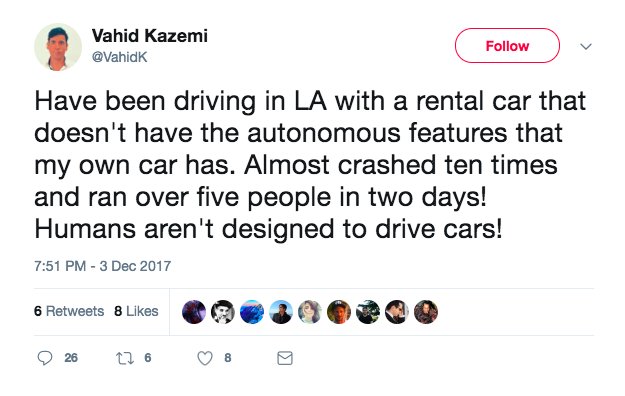

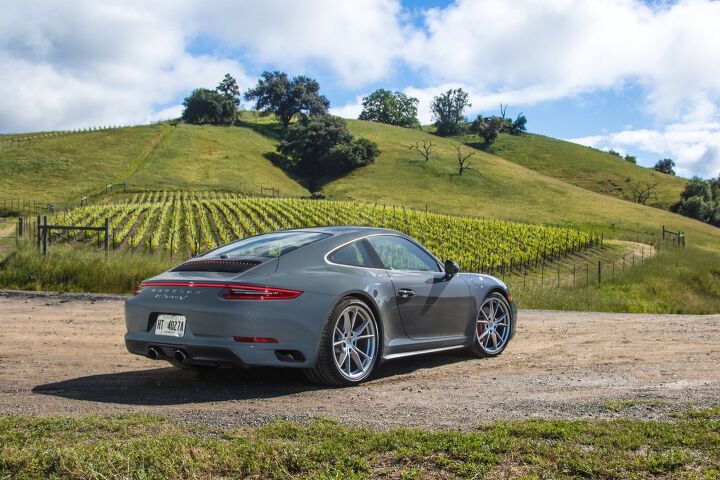
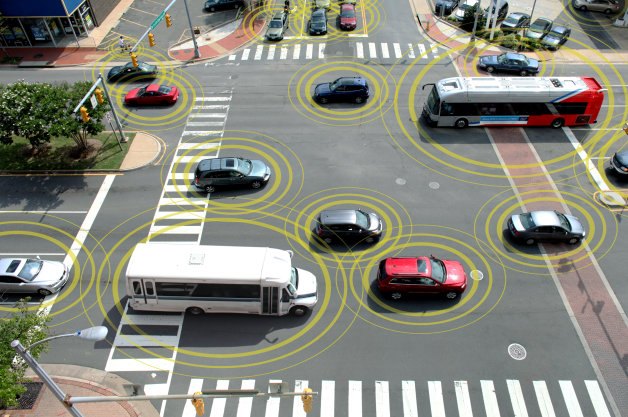




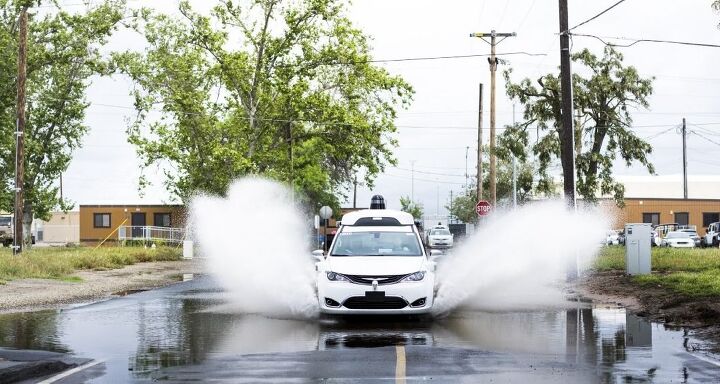

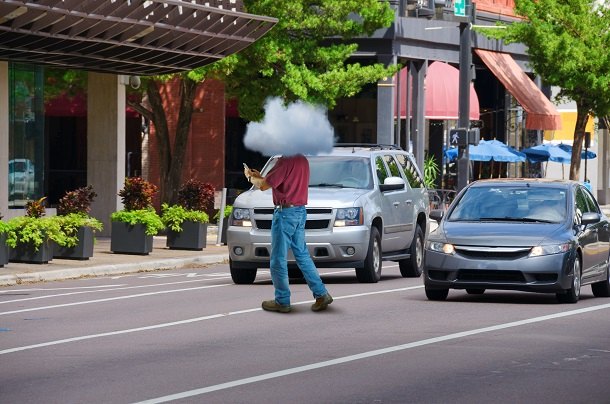

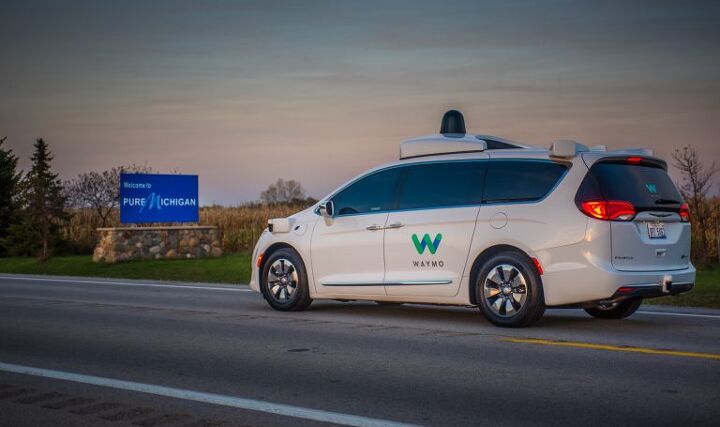

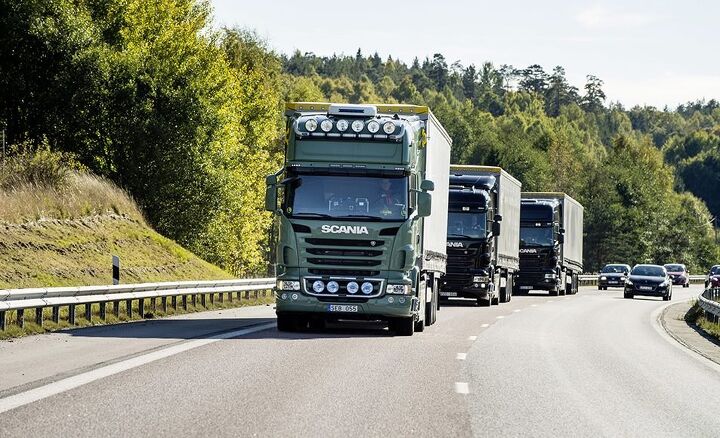




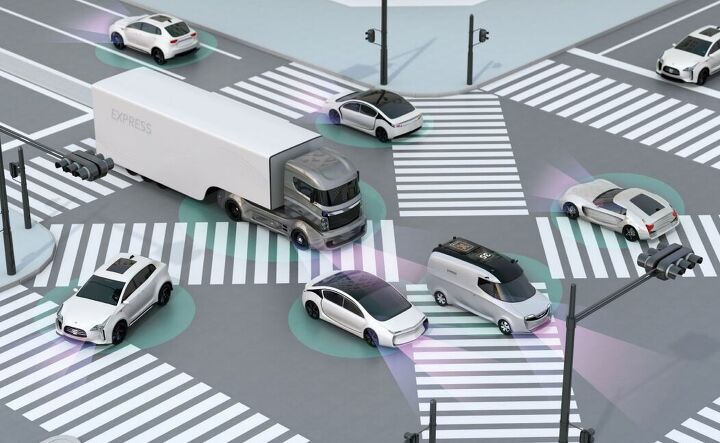
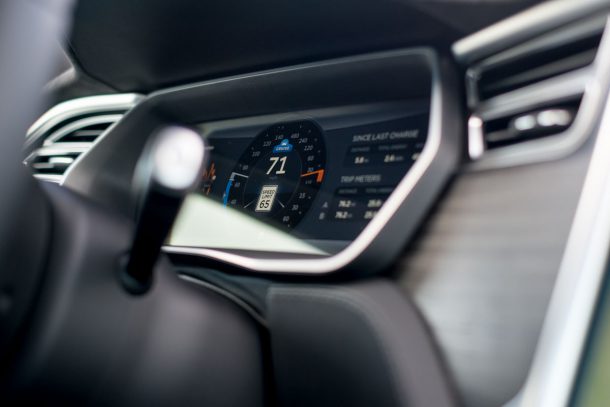
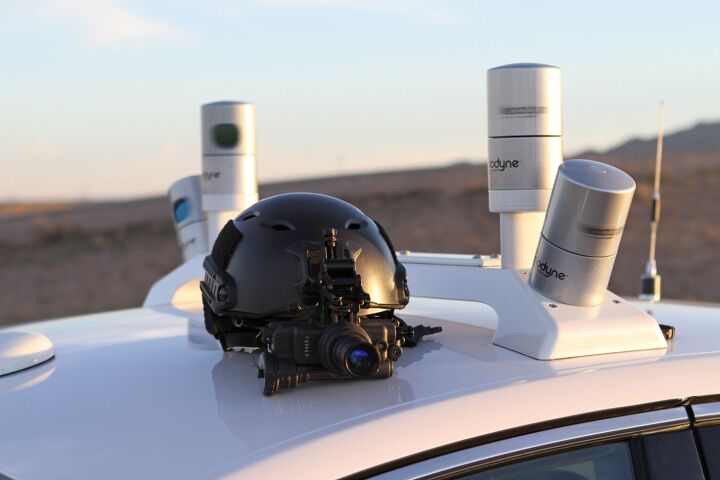












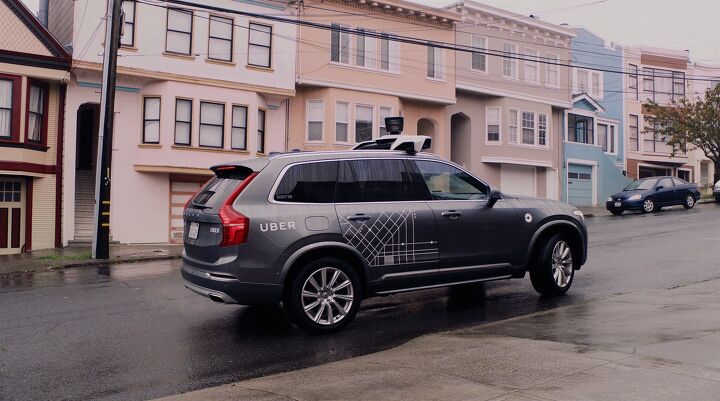



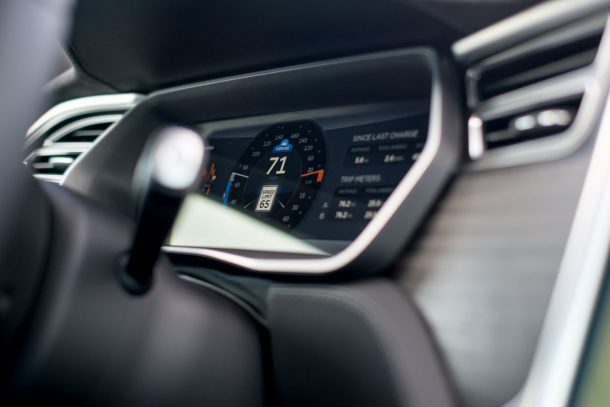


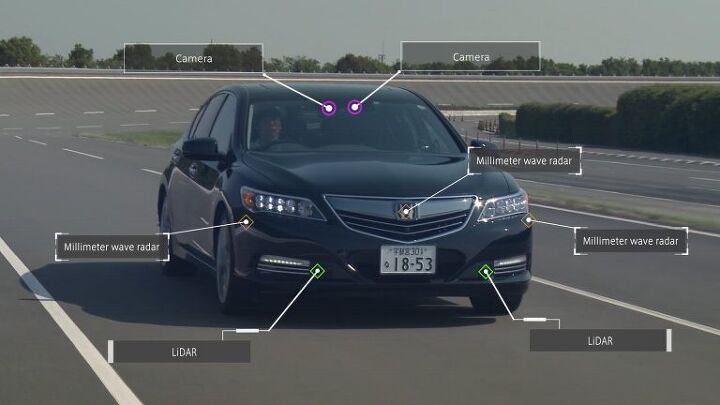







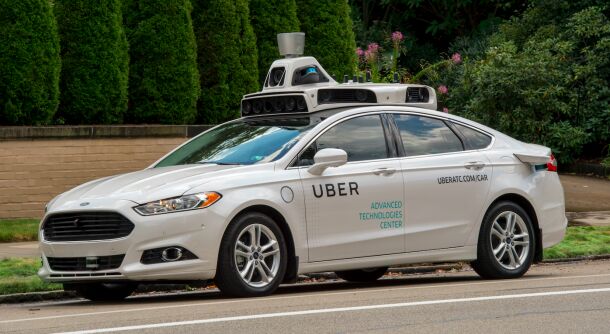

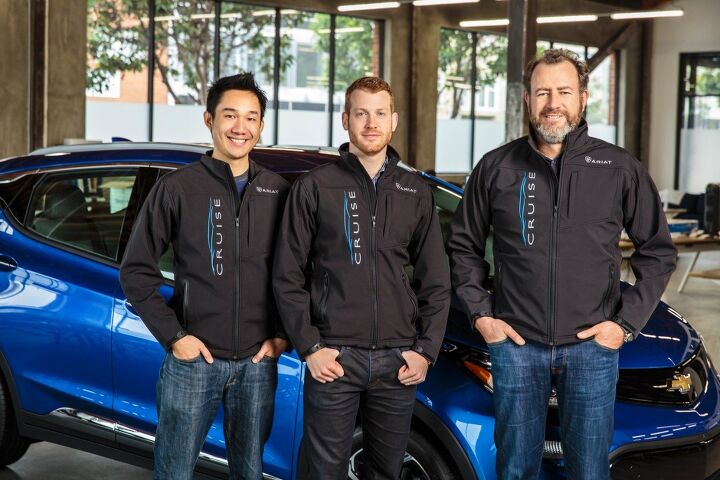













Recent Comments